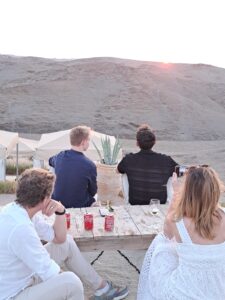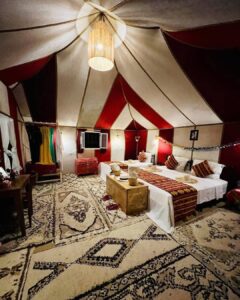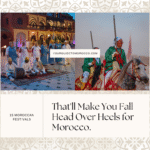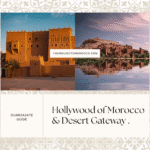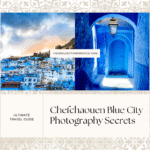15 Fascinating Moroccan Traditions That Will Transform Your Travel Experience
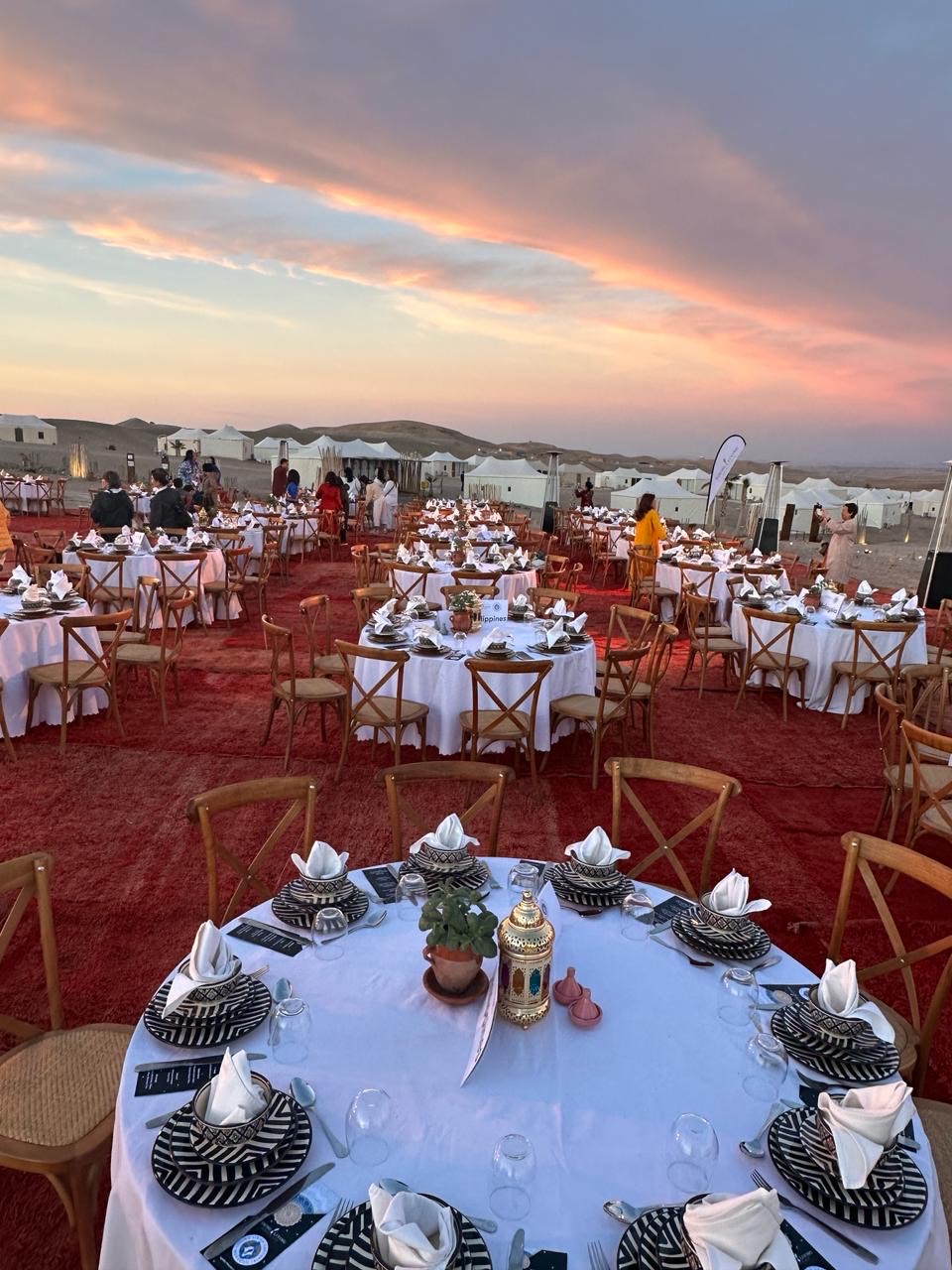
15 Fascinating Moroccan Traditions That Will Transform Your Travel Experience
Moroccan traditions have captivated travelers for centuries, offering glimpses into a culture where ancient customs seamlessly blend with modern life. Picture this: you’re sitting cross-legged on a hand-woven carpet, surrounded by the warm glow of brass lanterns, as your Moroccan host pours mint tea from an ornate silver teapot held impossibly high above delicate glasses. The sweet aroma fills the air while ancient Gnawa music drifts from somewhere in the medina’s labyrinthine alleys.
This isn’t just a scene from a travel magazine—it’s the authentic Morocco waiting for you beyond the tourist trail. Moroccan traditions aren’t museum pieces gathering dust; they’re living, breathing experiences that pulse through every aspect of daily life from the Atlas Mountains to the Atlantic coast.
Whether you’re planning your first adventure to the Kingdom or you’re a seasoned traveler seeking deeper cultural connections, understanding these time-honored moroccan traditions will unlock doors to experiences most tourists never discover. Ready to dive into the rich tapestry of Moroccan culture and explore the moroccan traditions that make Morocco utterly magical?
1. The Sacred Art of Moroccan Mint Tea Ritual – A Cornerstone of Moroccan Traditions
The moroccan mint tea ritual isn’t just about quenching thirst—it’s a ceremony that embodies the soul of Moroccan hospitality and represents one of the most cherished moroccan traditions. Known locally as “atay,” this emerald-green elixir is served with theatrical flair that would make a Broadway performer jealous.
How the ritual unfolds:
- Fresh mint leaves are carefully selected and rinsed
- Green tea is brewed in a traditional silver teapot called a “berrad”
- Sugar cubes are added generously (sweetness symbolizes the sweetness of life)
- The tea is poured from a height of at least 12 inches to create the signature foam
The high pour isn’t showboating—it aerates the tea and creates that perfect frothy top that Moroccans consider essential. You’ll witness this performance multiple times throughout your visit, as refusing tea is considered impolite.
Pro tip: Always accept at least three glasses. There’s a saying: “The first glass is as bitter as life, the second is as strong as love, and the third is as gentle as death.”
2. Traditional Moroccan Clothing: Essential Moroccan Traditions in Daily Life
Traditional moroccan clothing djellaba and other garments tell stories of identity, status, and regional pride. These clothing moroccan traditions have remained largely unchanged for centuries. The djellaba—that flowing, hooded robe you’ll see everywhere—isn’t just practical desert wear; it’s a symbol of Moroccan identity that transcends social classes.
Key traditional garments:
| Garment | Description | When It’s Worn |
|---|---|---|
| Djellaba | Long, loose robe with pointed hood | Daily wear, religious occasions |
| Kaftan | Elegant, decorated dress | Special celebrations, weddings |
| Babouche | Soft leather slippers | Indoors, mosque visits |
| Takchita | Formal two-piece outfit | Weddings, formal events |
| Haik | White draped veil | Traditional covering, rural areas |
The colors and patterns aren’t random choices. Deep blues represent the sea and sky, while earth tones connect wearers to the land. Many tourists make the mistake of treating these as costumes, but locals wear them with genuine pride.
Shopping tip: Look for authentic pieces in the medinas of Fez or Marrakech, where skilled artisans still hand-embroider intricate patterns passed down through generations. The UNESCO World Heritage Site of Fez is particularly renowned for preserving these moroccan traditions in textile arts.
3. Moroccan Wedding Traditions: Seven Days of Celebrating Moroccan Traditions
Moroccan wedding traditions transform the simple act of marriage into an elaborate cultural festival that can last up to seven days. These moroccan traditions aren’t just parties—they’re community celebrations that strengthen social bonds and honor ancient customs passed down through generations.
The seven-day journey:
- Day 1-2: Henna ceremonies for both bride and groom
- Day 3: The bride’s beauty rituals and traditional dress fitting
- Day 4: Religious ceremony and contract signing
- Day 5: Grand celebration with traditional music and dance
- Day 6-7: Family visits and gift exchanges
The moroccan henna art ceremony deserves special mention. Skilled artists create intricate patterns on the bride’s hands and feet using natural henna paste. These temporary tattoos aren’t just decorative—they’re believed to bring good luck and protection.
What makes it special: Every region has unique traditions. In the Atlas Mountains, Berber weddings feature different music and customs than coastal celebrations in Casablanca or Rabat. The Moroccan Ministry of Culture actively works to preserve these regional variations of moroccan traditions.
4. Ramadan and Eid: Sacred Moroccan Traditions of Spiritual Life
Moroccan ramadan traditions showcase the country’s deep Islamic roots while maintaining distinctly Moroccan flavors. These spiritual moroccan traditions transform the entire country during this holy month, creating an atmosphere unlike anywhere else in the world.
Ramadan in Morocco:
- Pre-dawn meal (suhoor) often includes dates and milk
- Iftar (breaking fast) begins with dates and chebakia (honey cookies)
- Tarawih prayers at mosques create beautiful evening sounds
- Charity (zakat) increases significantly during this month
Eid celebrations mark the end of Ramadan with explosive joy. Streets fill with families in new clothes, children receive gifts, and the air crackles with excitement. Traditional sweets like gazelle horns and almond pastries appear in every household.
Travel tip: If you visit during Ramadan, respect the fasting by eating discreetly during daylight hours. Many restaurants close during the day but offer special iftar meals at sunset. The Islamic Society of North America provides excellent resources for understanding these important moroccan traditions and Islamic practices.
5. The Heartbeat of Morocco: Musical Moroccan Traditions
Moroccan gnawa music isn’t just entertainment—it’s spiritual expression with roots in West African traditions brought by former slaves. These musical moroccan traditions create trance-like states that connect performers and audiences to the divine through hypnotic rhythms and mystical lyrics.
Musical traditions you’ll encounter:
- Gnawa: Spiritual music with metal castanets and sintir (bass lute)
- Chaabi: Folk music popular in cities
- Berber music: Traditional songs of the Atlas Mountains
- Andalusian classical: Sophisticated court music from Al-Andalus
Traditional dances accompany these musical styles:
- Chaabi dance: Energetic group dancing at celebrations
- Berber dance: Ceremonial dances of the Amazigh people
- Belly dance: Influenced by Middle Eastern traditions
Where to experience it: Head to Jemaa el-Fnaa in Marrakech at sunset, or seek out authentic performances in smaller towns where moroccan traditions remain unfiltered by tourism. The Essaouira Gnawa Festival showcases these authentic musical traditions annually.
6. Moroccan Crafts: Where Moroccan Traditions Meet Daily Life
Moroccan traditional crafts represent one of the world’s most sophisticated artisanal traditions. These aren’t souvenirs manufactured in factories—they’re functional art pieces created by master craftsmen whose skills pass from father to son across generations.
Master crafts and their centers:
| Craft | Best Location | What Makes It Special |
|---|---|---|
| Pottery | Fez, Safi | Distinctive blue and white patterns |
| Leather work | Fez | Ancient tanning techniques |
| Metalwork | Marrakech | Intricate brass and copper designs |
| Textiles | Rabat, Tetouan | Hand-woven carpets and fabrics |
| Woodwork | Essaouira | Thuya wood inlay work |
The berber culture morocco influence shows strongly in carpet weaving, where each tribe maintains distinct patterns and color schemes. A skilled eye can identify a carpet’s origin just by examining its motifs.
Insider secret: Visit workshops early in the morning when artisans are fresh and most willing to explain their techniques. Many offer informal lessons for curious travelers.
7. Moroccan Hospitality: The Most Cherished of All Moroccan Traditions
Moroccan hospitality customs go far beyond politeness—they’re sacred duties rooted in Berber traditions and Islamic teachings, representing perhaps the most important of all moroccan traditions. The concept of “karam” (generosity) means that guests are considered blessings sent by Allah.
How hospitality manifests:
- Immediate offering of tea or food to any visitor
- Insistence that guests eat until completely satisfied
- Sharing of personal stories and family histories
- Protection and guidance for travelers
The unspoken rules:
- Never refuse initial hospitality offerings
- Remove shoes when entering homes
- Eat with your right hand only
- Compliment the host’s home and family
Real example: I once got lost in Fez’s medina and asked for directions. Not only did a local man guide me personally, but he invited me to his home for lunch and introduced me to his entire extended family. This wasn’t unusual—it’s standard Moroccan behavior rooted in these ancient moroccan traditions. The Morocco World News frequently features stories about such remarkable hospitality.
8. Festival Calendar: Celebrating Life Throughout the Year
Moroccan festivals calendar reveals a culture that finds reasons to celebrate constantly. These aren’t tourist-oriented events—they’re authentic expressions of community joy, religious devotion, and seasonal rhythms.
Major festivals and their significance:
- Mawazine (May): World music festival in Rabat
- Fes Festival of World Sacred Music (June): Spiritual music from around the globe
- Imilchil Marriage Festival (September): Berber mass wedding ceremony
- Erfoud Date Festival (October): Celebration of the date harvest
- Essaouira Gnawa Festival (June): Traditional Gnawa music celebration
Regional celebrations often prove more authentic than major festivals. Ask locals about upcoming local events—you might stumble upon a village celebration that tourists rarely witness.
Planning tip: Book accommodations well in advance during festival seasons, as entire cities can fill up with both domestic and international visitors.
9. Moroccan Cuisine: Stories Served on Plates
Moroccan cuisine traditions transform meals into communal experiences that strengthen family bonds and honor guests. The famous tagine isn’t just a cooking method—it’s a social ritual that brings people together around shared plates.
Sacred food traditions:
- Couscous Fridays: Weekly family gatherings around this national dish
- Ramadan iftar: Community breaking of fasts
- Wedding feasts: Elaborate multi-course celebrations
- Religious holidays: Special dishes for Islamic celebrations
**The moroccan couscous tradition deserves special attention. Every Friday, families gather to share hand-rolled couscous with seasonal vegetables and meat. The preparation is often a women’s activity, with recipes and techniques passed down through generations.
Essential dishes and their cultural significance:
| Dish | Cultural Meaning | Best Place to Try |
|---|---|---|
| Tagine | Community sharing | Family homes |
| Couscous | Weekly family unity | Friday family meals |
| Pastilla | Celebration luxury | Wedding feasts |
| Harira | Ramadan tradition | During iftar |
| Mint tea | Hospitality ritual | Anywhere |
Food etiquette: Always eat with your right hand, take from the section of the communal plate in front of you, and never refuse food offered by your host.
10. The Ancient Art of Moroccan Storytelling
Moroccan storytelling tradition transforms ordinary evenings into magical journeys through history, mythology, and moral lessons. In Jemaa el-Fnaa square, you’ll find hakawati (storytellers) who maintain an oral tradition spanning over a thousand years.
Traditional storytelling elements:
- Epic tales of Berber heroes and Islamic saints
- Moral stories teaching community values
- Historical narratives of Moroccan dynasties
- Folktales explaining natural phenomena
The hakawati performance involves dramatic gestures, voice modulation, and audience participation. Even if you don’t understand Arabic or Berber, the storyteller’s passion creates an captivating experience.
Modern adaptations: Many riads and cultural centers now offer storytelling sessions with translation for tourists, preserving this ancient art while making it accessible to international visitors.
11. Henna Art: Temporary Beauty with Permanent Meaning
Moroccan henna art extends far beyond simple decoration—it’s a sacred practice connecting women to centuries of tradition, celebration, and spiritual protection. The intricate patterns carry deep symbolic meaning that many tourists never discover.
Traditional henna occasions:
- Weddings (elaborate bridal designs)
- Religious festivals (Eid celebrations)
- Birth ceremonies (new mother blessings)
- Seasonal celebrations (harvest festivals)
Symbolic meanings:
- Floral patterns: fertility and new beginnings
- Geometric designs: protection from evil
- Paisley motifs: good luck and prosperity
- Vine patterns: devotion and perseverance
The application process becomes a social event where women gather to chat, share stories, and strengthen community bonds. The ritual often includes traditional songs and shared meals.
Tourist tip: Seek out authentic henna artists in local neighborhoods rather than tourist areas. The quality is often superior, and you’ll experience the genuine social aspect of the tradition.
12. Prayer Rhythms: The Five Daily Calls That Shape Life
The call to prayer creates Morocco’s spiritual soundtrack, marking time and reminding everyone of their connection to the divine. These five daily calls shape the rhythm of Moroccan life in ways that surprise many visitors.
The five prayer times:
- Fajr (Dawn): Begins before sunrise
- Dhuhr (Midday): After the sun reaches its zenith
- Asr (Afternoon): Mid-afternoon
- Maghrib (Sunset): Just after sunset
- Isha (Night): After twilight disappears
How it affects daily life:
- Business hours adjust around prayer times
- Restaurants may close briefly during prayers
- Public transportation may slow down
- Social gatherings pause respectfully
The haunting beauty of synchronized calls from multiple minarets creates an otherworldly experience, especially in cities like Fez where dozens of mosques call simultaneously.
Respectful observation: Non-Muslims are welcome to listen appreciatively, but avoid making noise or engaging in inappropriate behavior during prayer times.
13. Moroccan Spices: The Pharmacy of Flavors
Moroccan spices and herbs serve dual purposes as culinary ingredients and traditional medicine. The famous spice souks aren’t just markets—they’re pharmacies where skilled vendors diagnose ailments and prescribe herbal remedies.
Essential spice blends and their uses:
| Spice/Blend | Culinary Use | Medicinal Properties |
|---|---|---|
| Ras el Hanout | Meat dishes, rice | Digestive aid, warming |
| Chermoula | Fish marinades | Anti-inflammatory |
| Harissa | Spicy condiment | Metabolism booster |
| Baharat | General seasoning | Antioxidant properties |
| Za’atar | Bread, vegetables | Immune system support |
Traditional preparation methods often involve hand-grinding spices in marble mortars, releasing essential oils that pre-ground spices lose. Many families maintain secret spice blend recipes passed down through generations.
The spice souk experience: Expert vendors can identify dozens of spices by smell alone and will create custom blends based on your taste preferences or health needs.
14. Architecture as Living Tradition
Moroccan architecture traditions create spaces that serve both practical and spiritual needs. The intricate geometric patterns, cooling courtyards, and strategic use of light transform buildings into functional art pieces.
Key architectural elements:
- Riads: Courtyard homes with central gardens
- Zellij: Intricate mosaic tilework
- Mashrabiya: Carved wooden screens for privacy
- Fountain courtyards: Cooling and spiritual centers
The philosophy behind design:
- Geometric patterns represent the infinite nature of Allah
- Courtyards provide private family spaces
- Thick walls and small windows combat heat
- Rooftop terraces offer cooling evening spaces
Islamic architectural principles forbid representative art, leading to the development of incredibly sophisticated geometric and calligraphic decorations that rival any artistic tradition worldwide.
Modern preservation: Many traditional riads now serve as boutique hotels, allowing visitors to experience authentic Moroccan architecture while supporting preservation efforts.
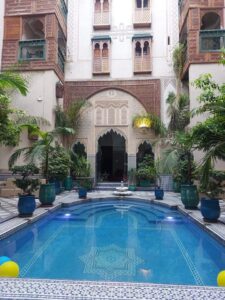
15. The Hammam: Purification Beyond Cleanliness
The traditional hammam (steam bath) represents one of Morocco’s most misunderstood traditions. Far from being a luxury spa treatment, it’s a community ritual that promotes physical health, social bonding, and spiritual purification.
The hammam process:
- Preparation: Undress and wrap in a towel
- Steam room: Relax in humid heat to open pores
- Scrubbing: Vigorous exfoliation with rough mitts
- Rinsing: Multiple rinses with warm water
- Relaxation: Rest period with mint tea
Social aspects:
- Gender-segregated spaces promote comfortable socializing
- Mothers teach daughters traditional beauty rituals
- Friends gather for weekly relaxation sessions
- Community news and gossip are shared
Health benefits include improved circulation, stress reduction, and skin health—benefits that Moroccans have enjoyed for over a thousand years.
Visitor etiquette: Bring your own towel and flip-flops, tip the attendant, and respect the quiet, meditative atmosphere that regulars prefer.
Conclusion: Your Gateway to Authentic Morocco
These 15 moroccan traditions offer more than cultural curiosity—they provide pathways to authentic experiences that transform casual tourists into true Morocco enthusiasts. Each tradition carries centuries of wisdom, community bonds, and spiritual meaning that continue to enrich daily life across the kingdom.
Your next steps:
- Research local festivals during your planned visit dates
- Learn basic Arabic or Berber greetings to show respect
- Seek out authentic experiences in smaller towns and villages
- Engage with locals genuinely rather than just purchasing souvenirs
- Support traditional artisans by buying authentic crafts
Remember: Morocco’s greatest treasures aren’t found in guidebooks—they’re discovered through genuine human connections and respectful cultural engagement. These traditions aren’t museum pieces; they’re living expressions of a culture that welcomes curious travelers with open arms and warm hearts.
Ready to experience Morocco beyond the surface? Pack your curiosity alongside your camera, approach each tradition with respect and openness, and prepare for a journey that will change how you see not just Morocco, but the power of cultural preservation in our increasingly connected world.
The mint tea is waiting, the storytellers are gathering, and the call to prayer echoes across ancient medinas. Your authentic Moroccan adventure begins the moment you step beyond the tourist trail and into the heart of these timeless traditions.
